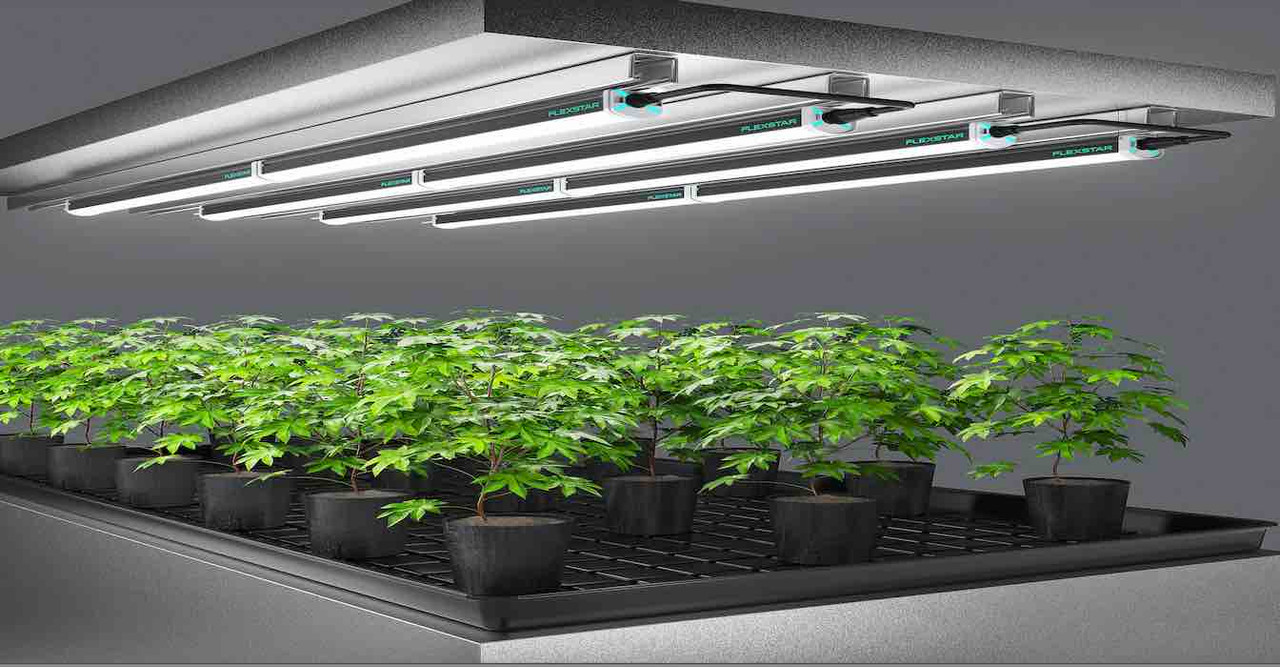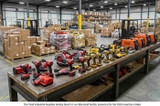DIY Grow Light Setup: A Step-by-Step Guide for Budget-Conscious Growers
Indoor gardening has surged in popularity as a rewarding way to grow plants year-round, regardless of outdoor weather conditions. Central to the success of any indoor garden is the use of grow lights, which replicate the sunlight necessary for plant growth. This guide is crafted with the budget-conscious gardener in mind, aiming to demystify the process of setting up a DIY grow light system that is both effective and economical.
Key Takeaway
Embracing DIY grow light systems offers a cost-effective solution for indoor gardening enthusiasts and empower you with the flexibility to tailor your setup to the specific needs of your plants. Understanding the science behind grow lights, with careful planning and regular maintenance, ensures your indoor garden can flourish year-round. By investing time in creating and caring for your grow light setup, you're investing in the health and productivity of your plants, maximizing the benefits of indoor gardening without compromising on quality or efficiency.
Understanding Grow Lights
What Are Grow Lights?Grow lights are a substitute for sunlight but a versatile tool that enhances plant growth, development, and yield. Grow lights are artificial light sources that stimulate plant growth by emitting an electromagnetic spectrum suitable for photosynthesis. Without natural sunlight, grow lights provide the essential energy plants need to grow and thrive.
Different Types of Grow Lights:
- LED (Light Emitting Diode): LEDs are famous for their efficiency and longevity. They produce less heat and can be customized to emit specific light spectra.
- Pros: Energy-efficient, long lifespan, customizable spectrum.
- Cons: Higher initial cost.
- Fluorescent: These lights, including T5 and CFL (Compact Fluorescent Light), are commonly used for growing seedlings and young plants.
- Pros: Lower initial cost, good for small spaces and starter plants.
- Cons: Less efficient than LEDs, shorter lifespan.
Assessing Your Needs
Choosing the right grow light begins with clearly understanding your indoor garden's requirements. Consider the following:
- Space: The size of your garden will determine the number and type of lights needed.
- Types of Plants: Different plants have varied light intensity and spectrum needs. Leafy greens may thrive under different lights than flowering plants.
- Growth Stages: Seedlings have different light requirements than mature plants. Adjustable or variable-spectrum lights can be beneficial.
Budget Planning
Setting a budget for your DIY grow light setup is crucial. While it's tempting to go for the cheapest options, investing more upfront in energy-efficient lights like LEDs can save money in the long run due to lower electricity costs and less frequent replacements. Researching and comparing prices across suppliers, including online marketplaces and local hardware stores, can help identify the best deals.
Materials and Tools Required
A comprehensive list of materials and tools sets the foundation for your DIY project:
- Grow Lights: Based on your garden's needs.
- Frame Materials: Wood, PVC, or metal are used to construct a frame to hold the lights.
- Wiring Supplies: Electrical wires, connectors, and a power strip.
- Tools: Screwdriver, drill, wire stripper, and cable ties.
These items can often be found at affordable prices in hardware stores or through online marketplaces. Reusing or repurposing materials can also keep costs down.
This initial phase of planning and gathering materials for your grow light setup lays the groundwork for a successful indoor garden. By understanding the basics of grow lights and carefully assessing your garden's needs, you can create an efficient system that supports your plants' growth without breaking the bank. Next, we'll dive into the step-by-step process of designing and assembling your grow light setup, ensuring it's tailored to your specific gardening goals.
Step-by-Step Guide to Building Your Grow Light Setup
Designing Your Setup
Planning is critical to creating an efficient grow light system. Consider the layout of your space and the distribution of plants to ensure even light coverage. Sketching your design can help visualize the setup, including the placement of lights and the structure of the frame. Remember, flexibility is key for adjusting to your plants' growth and varying needs.
Assembling the Frame
Your grow light frame serves as the backbone of your setup. Whether you're working with wood, PVC, or metal, the goal is to build a sturdy structure that can support the weight of your lights and any additional equipment. For those repurposing materials, inspect each piece for stability and safety. The frame should hold the grow lights at an adjustable height to accommodate plants as they grow.
- Instructions:
- Measure and cut your materials according to the dimensions of your planned setup.
- Assemble the base and sides, ensuring all joints are secure.
- Install horizontal supports for hanging the grow lights.
Installing the Grow Lights
Attaching the lights to your frame is a pivotal step. Securely fasten each light fixture to the frame using screws or cable ties, depending on the frame material. For LED panels or fluorescent tubes, evenly space the lights to ensure consistent coverage across all plants.
- Detailed Steps:
- Position the lights on the frame based on your design plan.
- Use cable ties or brackets to attach the lights to the frame securely.
- Adjust the spacing as needed to achieve uniform light distribution.
Wiring and Safety
Electrical safety must be balanced when wiring your grow lights. If you're not experienced with electrical work, consider consulting a professional. Otherwise, follow these guidelines to connect your lights to power safely:
- Ensure all electrical connections are tight and covered with wire nuts or electrical tape.
- Use a surge protector power strip to connect your lights, providing an extra layer of safety.
- Keep all wires neatly organized and away from water sources to prevent accidents.
Testing the Setup
Before introducing your plants to the new light system, test it thoroughly:
- Check all connections to ensure they're secure.
- Turn on the lights and observe for any flickering or issues.
- Measure light intensity using a lux meter to confirm your plants will receive adequate light.
Adjustments and Optimization
After testing, you might need to make adjustments:
- Height adjustments ensure lights are at the optimal distance from plant canopies.
- Light duration can be fine-tuned using timers to mimic natural daylight cycles, promoting healthy plant cycles.
By meticulously designing, assembling, and testing your DIY grow light setup, you create a tailored environment that caters to the specific needs of your indoor garden. This hands-on approach saves money and enriches your gardening experience, giving you direct control over your plants' growth conditions. Next, we'll cover maintenance tips to keep your system running smoothly and troubleshoot common issues to ensure your indoor garden flourishes.
Maintenance and Troubleshooting
Regular maintenance is crucial to ensure your grow light setup remains effective and safe over time. Here are some tips to keep your system in top condition:
- Clean your lights regularly to maintain optimal brightness. Dust and debris can significantly reduce light efficiency.
- Inspect wiring and connections periodically for signs of wear or damage, and replace any faulty components immediately to prevent safety hazards.
- Monitor plant growth and adjust the height of the lights accordingly. As plants grow, their light needs may change, requiring adjustments to light placement and intensity.
If you encounter flickering lights, reduced light output, or non-responsive fixtures, first check all connections and ensure the power source is stable. If problems persist, consult the manufacturer's troubleshooting guide or seek professional advice.
Additional Tips for Efficient Use
Making your grow light setup more energy-efficient benefits your plants and your wallet. Consider these suggestions:
- Use timers to control the light cycle, mimicking natural daylight hours and saving energy when lights are unnecessary.
- Incorporate reflective materials around your growing area to maximize light usage and ensure your plants receive light from all angles.
Environmental Sustainability Practices
Energy Efficiency
As the indoor gardening community grows, so does the focus on sustainability. Choosing energy-efficient grow lights, mainly LEDs plays a crucial role in reducing the operational costs and environmental impact of indoor gardening. LEDs consume significantly less power and have a longer lifespan than traditional lighting options, making them an ideal choice for eco-conscious gardeners.
Solar-Powered Options
For those looking to take their commitment to sustainability a step further, solar-powered grow light setups represent an exciting frontier. Though such systems may require a greater initial investment, the potential for harnessing renewable energy sources offers substantial long-term benefits, including reduced energy costs and a lower carbon footprint. Solar-powered grow lights embody the merger of gardening with green technology, paving the way for more sustainable cultivation practices.
Recycling Old Grow Lights
As technology advances and gardeners upgrade their systems, the question of what to do with old grow lights becomes increasingly pertinent. Properly disposing of or recycling grow lights, particularly those containing hazardous materials like mercury found in some fluorescent bulbs, is essential for environmental protection. This section would provide valuable resources and directions for gardeners to find recycling centers and eco-friendly disposal options, emphasizing responsible gardening practices.
Conclusion
A well-maintained DIY grow light system is a cornerstone of successful indoor gardening. It enables you to cultivate a wide variety of plants regardless of outdoor conditions. By understanding the components, carefully planning your setup, and adhering to safety guidelines, you can ensure longevity and reliability from your grow light system. Remember, the goal is to simulate the natural conditions plants crave, and with the right setup, you can achieve lush, healthy growth indoors.
Frequently Asked Questions (FAQs)
- How often should I replace my grow lights?
- LED lights can last several years under optimal conditions. Fluorescent bulbs may need replacing every 1 to 2 years. Monitor light output and replace as needed to ensure plant health.
- Can I use regular LED bulbs as grow lights?
- While regular LED bulbs can support plant growth to some extent, grow lights are specifically designed to provide the spectrum and intensity that plants need to thrive.
- How close should grow lights be to the plants?
- It varies by light type and plant species, but generally, LED lights can be closer to plants than hotter lights like HIDs, due to lower heat output. Always start with manufacturer recommendations and adjust based on plant response.
- Do all plants need the same amount of light?
- No, light needs can vary widely between plant species. Research your specific plants' needs to tailor your lighting setup accordingly.
- Is it safe to leave grow lights on all the time?
- Plants need periods of darkness to rest and undergo certain growth processes. Use a timer to create a consistent light/dark cycle suited to









